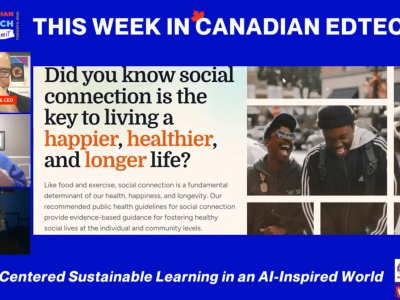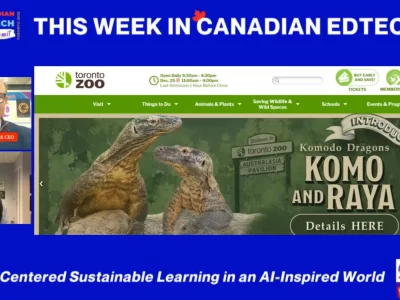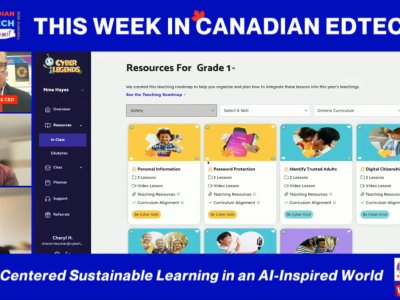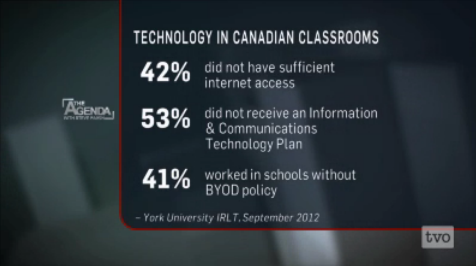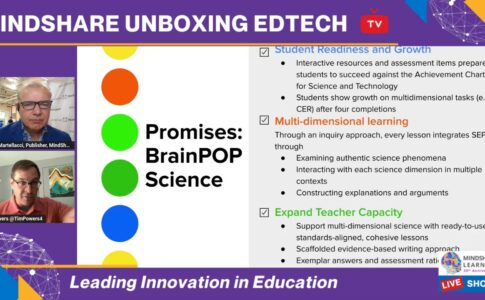By By Timothy Gard, Educator, Toronto District School Board
@MindShareK12
Online learning is often thought of as something that older, more mature and responsible students do. Who would think that younger students would be online, learning in ways that older students often do? And who would think that this online learning would be possible and effective? We know that younger students are accessing various social network sites. Many of my students have Facebook accounts and many of my students are aware of Twitter and access YouTube on a very regular basis. They chat, text, and have their own email accounts. And they are all under the age of 11. Surprising? I think not. Just recently I heard a 10-year-old student explain to one of his peers that having his own YouTube channel was ‘cool’ and fun. Another one of his peers opined during a class discussion that Facebook was old news; she has been on it since grade two. These ‘stories’ could be just that – stories. I think however that there’s more truth to these claims than we have come to imagine. These children have access to this media because they’re exposed to it on a regular basis via their parents, peers and older siblings. They’re naturally curious and depending on the availability of networked devices children will investigate what they see on television, or at the movies, or hear from their parents and siblings. Why shouldn’t we then provide online learning environments for children that were traditionally meant for older students?
An excellent article written for the Joan Ganz Cooney Center entitled, “Taking a Closer Look at Kids Online: Opportunities and Challenges in Social Networking Forums” investigates and examines what kids are doing online. These new ‘play’ environments have children involved in various activities and these social contexts are having an impact on them in various ways. Indeed, we need to be more vigilant about what our children are doing online; we need to know in order to protect them from questionable and unsafe contexts as well as contexts that are meant to build ‘brand’ or make those subversive claims that children carry with them when they inexplicitly ‘like’ something over something else. In short, we need to educate our children to be media literate. In my media literacy classes my pedagogy has been more about having children build their own media and then have them critically think about this media that they’ve created in the context of a media-centric world. A tall order, no doubt, but in my experience the most effective one especially when we have access to tools that allow young children to create and explore their own environments. Using these environments that they’ve created we can have them think critically about why they create them a particular way and who might be left out of their ‘world’ or what kind of a message they’re sending whether implied or not.
You’re probably wondering at this point what the above has to do with the title, and this article. A great deal. As educators we believe that teaching must address current contexts using the most effective type of pedagogy. Instead of coming against the wave of current modern thought about information and how children get it, how they process it and how exposed they are to it, we need to provide positive online environments that give us the tools to teach children to be creative, yet responsible; explorers but always thinking critically about where they may find themselves in this brand new digital universe. We must provide positive, constructive and controlled online environments where children can work, play and learn while collaborating safely and learning how to be media and digitally literate. One such online environment I use in my classroom on a regular basis and the students love it. Let me introduce you to Wixie.

Wixie is the online extension of Pixie and the creative genius of Tech4Learning. All school districts in Ontario have access to two of their desktop programs already – Pixie and Frames. Frames is their animation tool. Wixie is the online version of Pixie and pretty much mirrors Pixie 3, the latest desktop version. It’s an authoring tool that allows students to create their own stories in many different ways all the while working online in a closed environment. Schools are set up with their own Wixie-centric website that allows students, teachers and parents access for their particular purposes. Students can create and follow projects assigned by teachers; teachers can edit, observe and collect evidence of achievement and parents can view their child’s product/creation via an online key. Students can share, work collaboratively, and access Wixie from iPads, or from any number of Android tablets. Wixie is built for accessibility. In fact, Tech4Learning has just released its Kindle Fire version.
Wixie is managed by an administrator. Administrators of a school account create and manage accounts for both teachers and students, as well as control access to the various nuances of the program. For example, the administrator can control what level of activities the students can access and can limit the kind of linking that can occur within the program for both students and teachers. Teachers can create and assign projects according to each student’s needs and then view the student’s progress via the student tab. The teacher can easily access the student’s projects, portfolio and assessment via this same view. Like the students, teachers can access this work from any location as well. The Wixie app for iPad allows the teacher to login to their class account to assign, view or assess work and comment on each piece that the student has created giving the student the timely feedback they require for improvement.
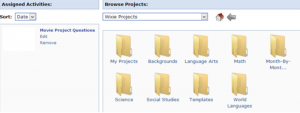
Student’s love this award winning online environment. As one primary student explained to me, “Wixie is the dust that Pixie fairies use.” Yep, it is! Teachers hear students conferring in the hall with each other about Wixie and when the last time was that they had an opportunity to access the program, either at school or at home. When I first assigned accounts to a primary classroom I assumed – wrongly! – the students would more than likely wait until they came back to see me to understand how to use the program. When I logged into the administrator’s account I noticed that one of the students in that particular classroom had already spent the equivalent of 6 hours on Wixe over the course of a week. Armed with the URL and the User login and password young students will make every effort to explore an environment that they’re curious about – with the help of mom or dad, or even an older sibling! I couldn’t be happier because whatever time they spend in a creative environment exploring and creating according to their interests means less time consuming information in a passive way or playing the myriad of games that don’t often offer anything but controlled environments that offer little educational value. There are exceptions to this however; I don’t wish to over generalize.
Tech4Learning is aware of social media and the ability for students and teachers to share work to a greater community. The company has embedded into Wixie the ability to share projects via email, Facebook or even Twitter! Talk about audience! The genius of Wixie is found in the care and attention to detail that comes with this companies products and the ability to share work in a much broader community – with safeguards – is an example of the broad thinking that occurs in this company. They create products that are conduits to creative expression and these expressions are only limited by a teacher’s foresight and planning and the student’s natural curiosity – so, in short, Wixie becomes limitless in many ways.
As you’ve noticed I didn’t get into a great deal of detail about how students use Wixie. I’ve written a previous review of Pixie and as I’ve mentioned the desktop and online version are identical with few differences. And if you decide to give Wixie a whirl, students can open and import pages created in previous versions of Pixie into the online environment quite easily. The purpose of this ‘review’ wasn’t to explore the program in detail so much as to help you envision a place and space where younger students can learn online and do so effectively. I also wanted you to be aware that this online environment is well designed and a pleasure to use.
Tech4Learning is one of those companies, in my opinion, that just gets it with teachers. Create a program that is easy to understand, fosters creative expression but doesn’t limit the way that expression is nuanced and let the students become empowered and you’re going to attract a following. And if you need help, it’s never far away. There’s a plethora of help available written in a simple way and their online community is second to none with advice, new ideas or a place to share your latest brainstorm! I love that about this company – it’s truly about learning, both for the students and the teachers…and parents! And the learning is cultivated at all levels from teacher to student to parent. Don’t delay – if you’re looking for a solid online program that allows your students to access work both at school and home, and takes advantage of true mobility, then look to Wixie. We plan to use it as part of our mobile project in mathematics in the New Year.
